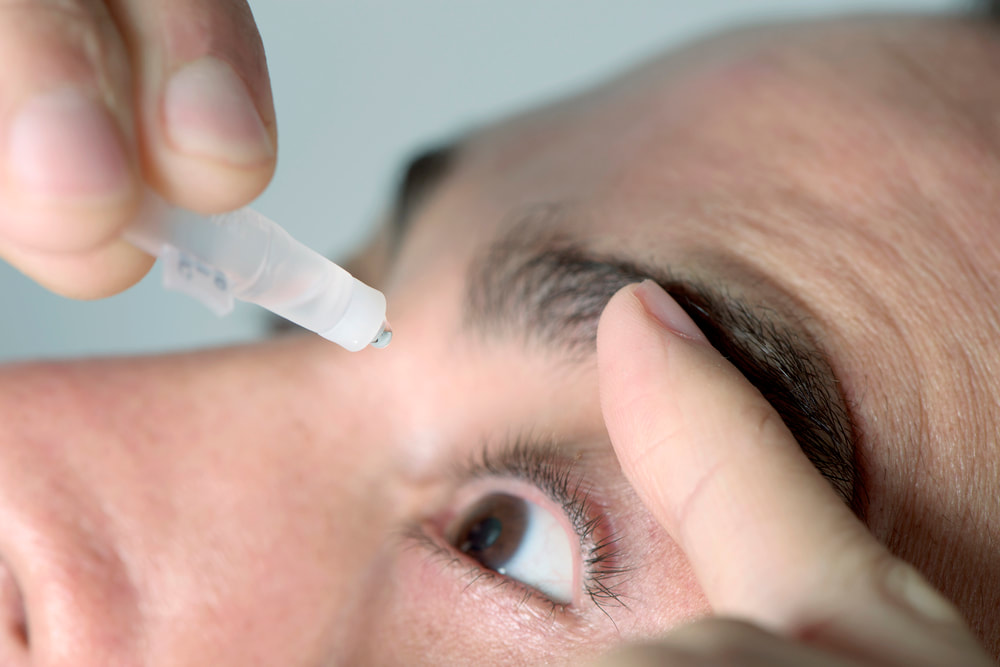What is pulmonary fibrosis?Pulmonary fibrosis involves scarring of the lungs. The scarring makes the lungs stiffer, which interferes with breathing and getting oxygen into the body. Different factors may contribute to the development of pulmonary fibrosis. Risk factors include the following:
In some cases, the cause of pulmonary fibrosis is not known, and the condition is called idiopathic pulmonary fibrosis (IPF). According to the American Lung Association, about 50,000 people are diagnosed with IPF each year in the United States. Symptoms of pulmonary fibrosis may include:
Can it affect the eyes?In addition to problems breathing, pulmonary fibrosis can lead to certain eye conditions, including the following: Dry eyes: Although dry eyes are common in people without underlying medical conditions, having certain diseases, such as pulmonary fibrosis, increases your risk. Dry eyes in fibrosis may occur due to chronically low oxygen levels caused by the scarring in the lungs and impaired gas exchange. Some people with pulmonary fibrosis also use supplemental oxygen, which can increase dryness. Blurry vision: The lack of oxygen can affect any part of the body, including the eyes. Some people may develop changes in the blood vessels in the eyes, which leads to ocular changes, such as blurry vision. Cataracts: Cataracts are common in the general population. According to the National Eye Institute, in the United States, about 50 percent of adults over age 80 have cataracts. But your risk may increase if you use steroids, such as prednisone, on a regular basis. Prednisone may be prescribed to help treat pulmonary fibrosis. Treatment for pulmonary fibrosisTreatment for pulmonary fibrosis may help decrease symptoms and slow the progression of the illness. Treatment may include medication, such as anti-fibrotic drugs and steroids. Additional treatment may include oxygen therapy, as well as breathing exercises to ease symptoms. Some people may qualify for a lung transplant to remove the damaged lung and replace it with donor’s lungs. Lung transplantation is a long process, and not everyone is a candidate, but it can be a viable option for some people. Keeping the eyes healthy with PFIf you have pulmonary fibrosis, it’s important to do what you can to keep your eyes healthy and maintain good vision. Consider the following suggestions:
Get regular eye exams: Changes to the eyes may develop due to the lack of oxygen or medication used to treat fibrosis. Additionally, someone with pulmonary fibrosis may develop other eye diseases similar to the general population. Regular eye exams are one of the most important ways to diagnose and treat problems early. Follow your pulmonary fibrosis treatment plan: Managing your condition by following your treatment plan may help slow the progression of the disease, including eye problems. Use eye drops as recommended by your eye doctor: Dry eyes are not usually serious, but it can be uncomfortable. Eye drops can help. Don’t smoke: Smoking can damage the blood vessels in the eyes and increase your risk of eye diseases. People with pulmonary fibrosis already may have some vessel damage due to chronically low oxygen levels. Smoking may make it worse. If you have questions about pulmonary fibrosis and the eyes or any other eye problems, we are happy to help. Also, please call our office at 508-746-8600, if you would like to discuss whether an appointment with one of our eye doctors would be appropriate at this time. Comments are closed.
|
EYE HEALTH BLOGCategories
All
Archives
July 2024
|
|
Kadrmas Eye Care New England
55 Commerce Way, Plymouth, MA 02360
14 Tobey Road, Wareham, MA 02571 133 Falmouth Road (Rt 28), Mashpee, MA 02649 |
Phone Number:
1-508-746-8600 Hours: Monday through Friday — 8 AM – 4:30 PM |


 RSS Feed
RSS Feed
